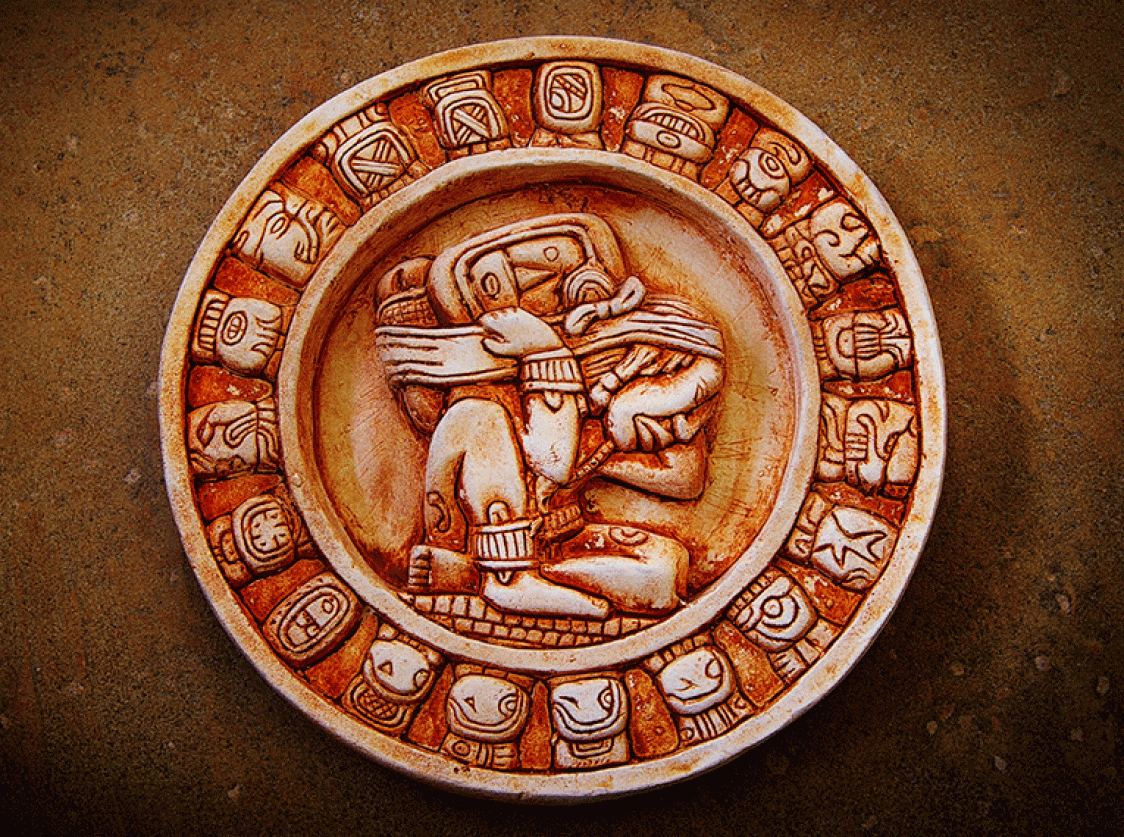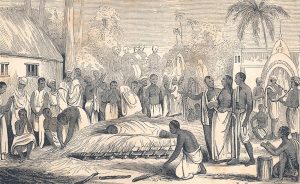THE ERA OF THE SOULLESS MAN: WILL THE WORLD END ON 21/12/12?
By TONJE ROBERTSEN
“… and man forgot who had given him his power, he became arrogant, loved his money, loved material things, … and forgot his world, he forgot his forefathers and the memories of his grandparents, he forgot to give tribute to Mother Earth but poisoned her instead with his actions and his whims, he consumed her soul and made her sick, destroyed her spirit, turned on himself, man became his own enemy…”
In the legends of the ancient Mayans, these were the signs that the last days of man were approaching, according to the book Jaajal T’aan (sacred revelations), in which professor Lázaro Hilario Tuz Chi presents an intriguing insight into the Mayan legends. It poignantly describes the era of the soulless man as the beginning of the end. Some claim that this will happen on 21 December this year.
The first time I climbed the spine-chillingly steep and narrow steps of a Mayan pyramid, I was struck by the quiet dignity of the monuments left behind by a civilization whose collapse remains a mystery. I was in Uxmal, today a ruined city but once the spiritual centre for Mayans on the Yucatán peninsula in modern day Mexico. From the top of the impressive stone structure, which was built in astonishingly precise synchrony with the sun, I marveled at the surrounding pancake-flat landscape covered by a never-ending rainforest canopy. I could swear I heard whispers in the wind.
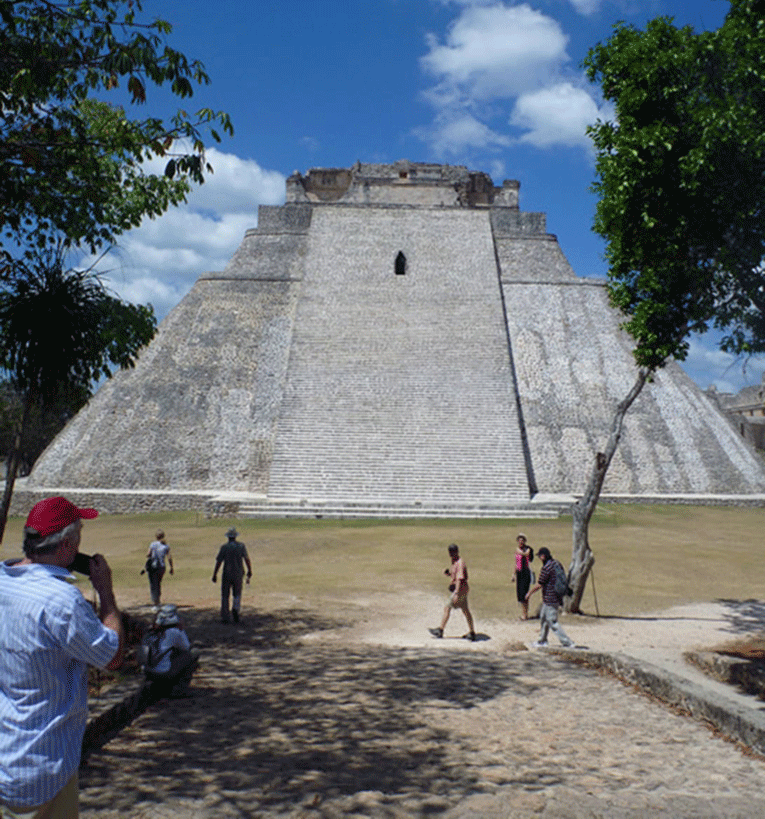
Could the ancient Mayans really have known when our world would end? Much has been said about the 21 December 2012 date, but are we truly living in apocalyptic times? And what do the modern Mayans make of the rest of the world’s fascination with their calendar? Most Mayans appear largely unbothered by the international hysteria, but there are also those who are genuinely worried.
I’m scared, says Guadalupe Jiménez Aragón. A 32-year old woman of Mayan decent is from Chuburná, a small fishing village nuzzling the north coast of the Yucatán peninsula, facing the Gulf of Mexico. Her parents were from an even smaller village inland, and even though her mother now dresses catrina-style, Yucatan-lingo for Mayan women who wear Western clothes rather than the traditional huipil, a light, white dress with colourfully embroidered flowers.
Both her parents speak Maya fluently and have been Guadalupe’s greatest, if not only, source of wisdom about como era antes (how things were before). The source of her worry is her father’s interpretation of the legend: “My father says that the world is not about to go under, but that all human beings will disappear. It will be the end for us, but a new beginning for the planet,” says Guadalupe.
It may not be uplifting for us Homo sapiens, but this is part of the lure of the ‘prophecy’. Not the total destruction predicated by fear-mongers, but the perceived possibility that rather than end, the world will immerse itself in a profound process of change and come out the other end as a better version of itself. That the era of the soulless man is coming to an end.
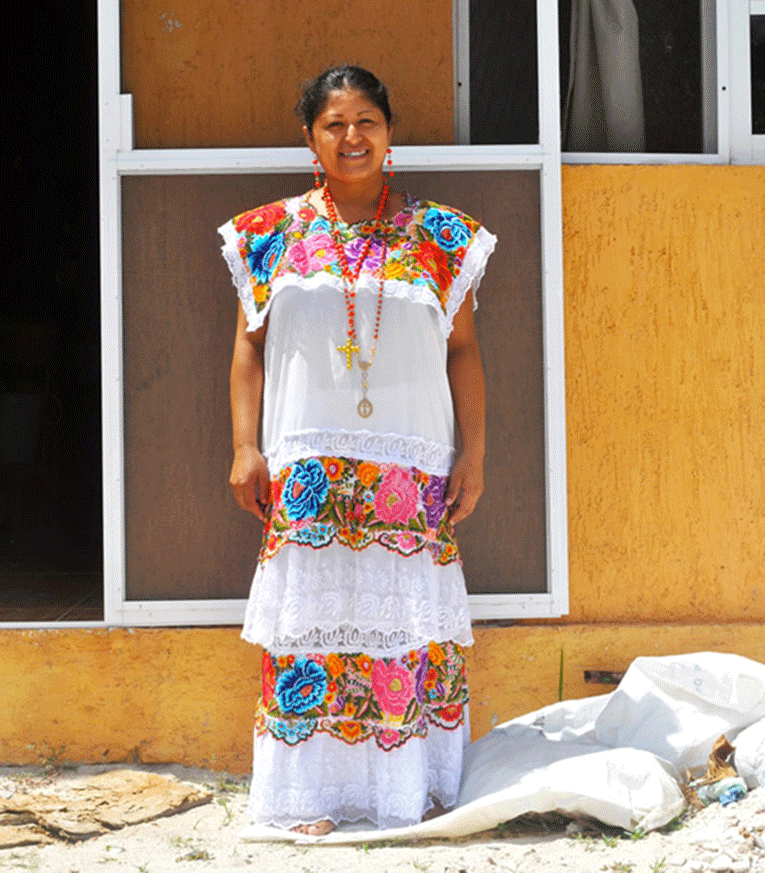
The Timekeepers
Classic Mayan civilization was a highly literate one. It boasted a complex system of hieroglyphic writing, and a deep understanding of astrology and mathematics, including the concept of zero. They used four different systems for timekeeping that must have taken hundreds of years of astronomical observations to perfect. The tzolkín was a 260-day calendar for religious rituals, while the haab used a 365-day solar cycle, mainly for the planning of agricultural activities. These two were combined in a third system, the calendar wheel. Fourthly, there is the Long Count calendar, in which each period, or baktun, lasts for 5125 years. It is this Long Count that will end on 21 December 2012.
Both academics and self-proclaimed experts of numerous subjects have professed a wide range of theories of what could happen on 21 December; from a sudden shift in the Earth’s magnetic poles, uplifting galactic beams and alien invasions, to the notion that all of human kind suddenly awakes to a greater level of consciousness and inner peace.
Some argue that the telltale signs of a world about to go under are already here. The end of this baktun coincides with rare alignments in our solar system, which will not recur for another 26,000 years. There are also signs that the Earth’s magnetic poles are about to swap places. The early ‘symptoms’ of such a switch are changes in weather patterns and a steady weakening of the planet’s magnetic field— both of which seem to be happening now.
But historically, polar reversals are the rule, not the exception. Estimates say they have happened at least hundreds of times over the past three billion years. They also take a while. According to NASA, “a reversal happens over hundreds or thousands of years, and it is not exactly a clean back flip.”
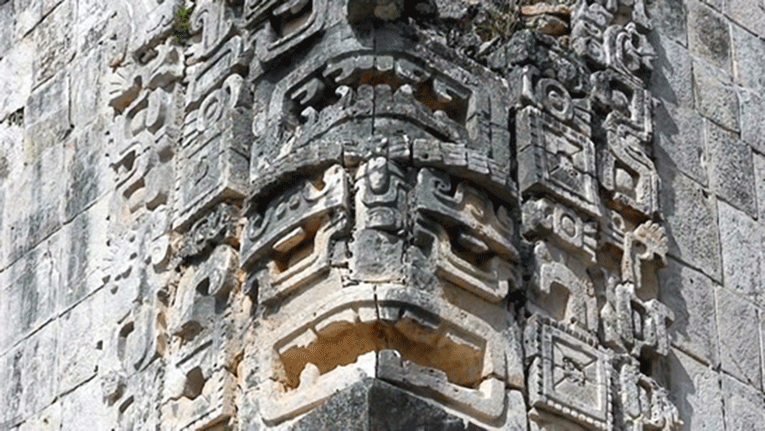
Most serious research concludes that the Mayans never predicted the end of the world on this specific date; they simply foresaw the beginning of a new calendric cycle. It seems the idea of sudden destruction has been created outside of the Mayan community, after all. A stela in Tabasco, Mexico, is often cited as the only concrete reference the ancient Mayans ever made to the date. Even then, its interpretation is highly disputed. According to The National Institute of Anthropological History in Mexico, the Tabasco stela simply outlines the biography of Ahpo Bahlum, a Mayan governor. Marte Trejo Sandoval, Yucatecan historian and astronomer, told a science convention in May 2012 that “no stelae or calendar from the Mayan civilization prophesy that the world will end on 21 December of this year.”
It would be reasonable to expect contempoary Mayans to be preparing for an apocalypse predicted so pin-pointedly by their ancient skywatchers. Surely we all ought to be setting up some sort of defence system and rehearsing our survival techniques. However, it seems most Yucatecans believe nothing will happen. People joke about not buying any Christmas presents before 22 December, and that no one should have to go to work in the weeks leading to the appointed day: “what is the point if the world is going under on the 21st? “
Barbara Herrera is another Yucatecan 32-year old. Unlike Guadalupe, she did not grow up in a small village, but in the bustling state capital of Mérida. She is not at all concerned about the ancient prophecies. In fact, she is so relaxed about the whole thing that she is planning her own wedding for 29 December.
“I believe the calendar simply refers to a new cycle, but there seem to be so many different interpretations. The idea that the world will end on 21 December is something new,” says Barbara. When asked if she is planning on doing anything special on the date, she says she is going to Cancún to pick up her new parents-in-law.
There are those who take the date more seriously. But despite their concern, Guadalupe and her family, for example, are not stockpiling canned foods or extra batteries—far from it. With customary Yucatecan serenity, most people opt for the obvious: “We don’t do anything specific to prepare for 21 December. We are waiting for something unknown, so how would we know how to prepare for it?”
Officials have, not surprisingly, decided to embrace the notion of positive change rather than cataclysmic destruction. Both Mexico and Guatemala launched special 2012-programs earlier this year, planning expositions, conferences and events both at home and internationally. In Yucatán, 2012 was announced The Year of Mayan Culture and a huge, new museum has been constructed in Mérida. A culture festival featuring a 2011 Nobel physicist, Brian P. Schmidt, is planned for the days around 21 December, and the new Mexican president, Peña Nieto, will travel to Merida to join in the celebrations.
It is obvious that the promotion of Mayan culture is on top of the agenda, but there is no denying that the prospect of a rejuvenated tourism industry has been a very important motivation, too. In October, a group of irate Guatemalan Mayans demanded an end to the hyperbole and accused their government and tour groups of adding fuel to the doomsday myth for financial gains.
“We are speaking out against deceit, lies and twisting of the truth, and turning us into folklore-for-profit. They are not telling the truth about time cycles,” said Felipe Gomez, leader of the Maya alliance Oxlaljuj Ajpop, in an interview with AFP. The group also issued a statement saying the new baktun simply signifies that “there will be big changes on the personal, family and community level, so that there is harmony and balance between mankind and nature.”
Global recession has chipped away at Yucatán’s tourism industry over the past few years, not to mention the devastating 2009 influenza pandemic. It was hoped that 2012 would bring millions of new visitors. Statistics from the Secretariat of Tourism in Yucatan shows a slight increase from 2011, but it remains to be seen if December brings the anticipated influx and whether the increase will continue into 2013. Assuming the world still exists then, of course.
Change
Part of Guadalupe’s frustration is a sense of her culture slipping away from her and a yearning for more, trustworthy information about her ancestors and their beliefs:
“I often meet foreigners who know more about the ancient Mayans than I do. It is very frustrating. Most of the books I have been looking at in the bookshops in Mérida are not even available in Spanish, only in English, German and French. And definitely not in Mayan. They are made for the tourists.”
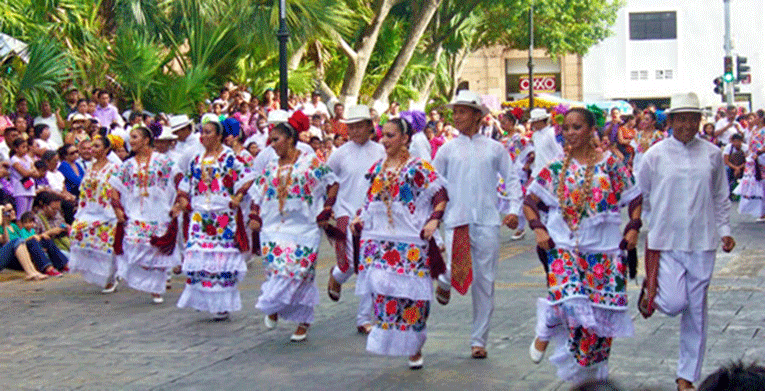
She asks if the money spent on museums, events and exhibitions could not have been put to better use in the villages, ensuring for example that the younger generations are taught the Mayan languages. She seems to be constantly drawn between her old and new worlds. She dwells on her heritage and strives to make room for the Mayan language, food, clothing, music and art. She is torn between the naturalistic world of her forefathers, where man is interchangeable with animal and the Ceiba-tree connects our world with both the underworld and the world of the gods, and the opportunities of modern Mexico, Latin Americas second largest economy in which her state, Yucatán, is one of the fastest growing ones.
“We are moving away from our culture. The children don’t learn the Mayan languages any longer, they don’t know how to dance the jarana or make hand-made tortillas. A lot of knowledge is disappearing, such as how to treat diseases or injuries with plants from the forest and how to cook our traditional dishes. Everyone buys their food at the supermarket and wears Western-style clothes. People call their kids Jennifer and Alexander, they don’t give them Mayan names anymore,” she sighs.
Perhaps the whole 21 December euphoria is driven by logic itself. Surely, we should accept that the ecological, political and economic upheavals of the past decades would at some point instigate change, one way or another. In fact, most environmentalists say that change will come either way. We either change on our own initiative the way we scratch and scrape this only planet of ours, or it will change everything for us some day.
While scholars and self-taught 2012-enthusiasts hammer away at each other’s theories in online chat rooms and social media fora, for her part, Guadalupe is confident that something is about to happen. She says has been warned about this date since her childhood.
“In my village, they say that a lot of strange things are happening right now. Before, we always knew when it would rain, when there would be sun and when the nortes would come. Now we don’t anymore, it has become impossible to predict the weather and the fishing seasons. For example, pulpo (a small squid) fishing season this autumn has been really bad. Normally, some years are better than others, but this year, there is hardly any pulpo. They say in the village that there has never been as little as now. Even those who fish shrimp can’t find any. This has never happened before,” she says.
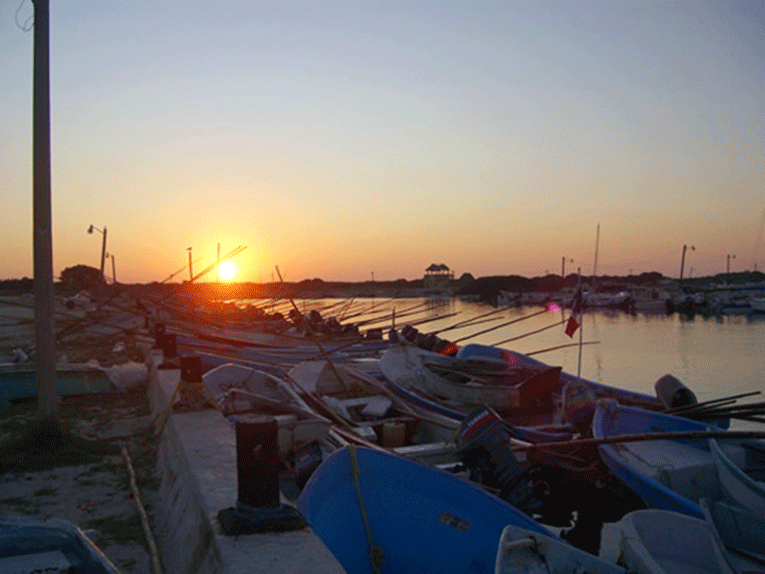
A quick Q&A in the streets of another nearby fishing village, Chelém, confirms that 2012 has been a bad year for squid and shrimp, and that many families have struggled financially as a consequence. But most cite overfishing and climate change as the main reasons for this happening. Local papers also blame low pulpo prices on the international market and plenty of bad weather, which has forced small fishing boats to spend a lot of time in harbour this season. For that matter, one Chelém woman says:
“I don’t think anything is going to happen. It is just the last day of a calendar.”
The emergence and collapse of the ancient Mayan civilization, underscored fabulously by the abandonment of large cities around A.D. 900, is still enshrouded in mystery. It is not surprising that Maya-scholars disagree with one another, and even less so that the rest of us are bewildered. As Heather McKillop writes in her book The Ancient Maya – New Perspectives:
“Classic Maya society is recreated from fragmentary remains from a sample of sites that are partially excavated.”
But it seems that far beyond the 2012-hype, there are other, much more substantial lessons to be learned from the ancient Mayans. Their most valuable knowledge lay in how they mitigated man’s dependency on nature, the strong connections they saw between all living beings, and the acknowledgement of the wisdom passed on by those who went before them.
SOURCES: Lázaro Hilario Tuz Chi, Jaajal T’aan – Revelaciones Sagradas, (Universidad de Oriente and the Yucatán Ministry of Education, 2012) /// McKillop, Heather, The Ancient Maya – New Perspectives (Norton, 2006) /// Sitler, Robert K, 2012 and the Maya World, in The Mystery of 2012 – Predictions, Prophecies and Possibilities (Sounds True, 2009) /// Jenkins, John Major, Maya Cosmogenesis 2012 (Bear & Company, 1998)
PHOTOS/CREDITS:
1) Ancient Mayan Calender. Photo © by iStockphoto.
2) Pyramid of the Magician, Uxmal. Photo by Tonje Robertsen
3) Guadalupe Jiménez Aragón, in front of her house in Chuburná. She put on her huipil for the photographer, normally she dresses catrina-style (Western clothes).Photo by Tonje Robertsen
4) Detail from the Nunnery Quadrangle, Uxmal. Photo by Tonje Robertsen
5) Street sceene from the historic centre in Mérida. Photo by Tonje Robertsen
6) A weekly performance of the Yucatecan jarana-dance in Mérida, the women are wearing huipiles, the traditional Mayan dress in a light, white fabric embroidered with colourfull flowers.Photo by Tonje Robertsen
7) The sun rising over the harbour in Chuburná. Photo by Tonje Robertsen


